七言排律 钟灵毓秀峨眉山

蒲文强
2021年8月8日
其 一
峨眉圣佛万世修,四象万福[1]度千秋。
普贤金佛供金顶,佛光普照漫山岫。
鬒黛遥妆[2]冠天下,云鬘凝翠赢九州。
隆安三年[3]奠基礼,慧特入蜀[4]庐山酬。
三九九年[5]普贤寺,普贤道场[6]庆头筹。
峨眉矗峙涐水边,邛崃南段涐水流。
四峨[7]相连显巍峨,钟灵毓秀一眼收。
动物二千三百类,植物三千种出头。
五A景区风光美,世界遗产更稀有。
主峰越高三千米,后山绝壁万丈陡。
对望云端四方台,天兵天将放声吼。
干里云海观日出,人间天堂万年秀。
秦人盛赞[8]峨眉山,如雷贯耳胜王侯。
圣积晚钟[9]老宝楼,一皮竹蔑[10]吊钟钮。
洪钟二万五千斤,声震九霄玉帝瞅。
文人墨客夸圣寺,国宝华章山中留。
李白杜甫李世民,挥毫泼墨[11]千古优。
其 二
佛祖显圣[12]彩云曦,万道光环映天际。
五彩佛光洒滿地,普天赐福信众喜。
千古奇观人间罕,佛佑永年勘称奇。
回望僖宗[13]降圣旨,敕建永明华藏寺。
中峰中心和华严,万年黑水灵岩起。
因火更名[14]叫云集,卧云归云白水溪。
敬铸普贤铜塑像,再建灵岩重筑基。
供奉白水寺大殿,六十二吨世罕稀。
药农蒲公[15]建普光,时在公元一世纪。
北宋皇帝宋太祖,钦定继业[16]访印期。
峨眉庙宇三十处,万年无梁[17]砖殿砌。
华严铜像五千樽[18],暹罗国王贝经译。
馆藏圣物七千宝[19],天下名山[20]郭公笔。
报国善觉皆御题,圣匾墨宝[21]出康熙。
司徒玄空白猿祖[22],春秋战国为史时。
峨眉武术通臂拳[23],誉满天下若旭日。
昌福禅师著茶道[24],茶禅一味赢敬意。
雪芽白芽竹叶青,圣山妙品圣水沏。
注释:
[1] 峨眉山金顶金佛系铜铸镏金工艺佛像造像,通高48米,总重量达660吨,由台座和十方普贤菩萨像组成。金像通高48米,象征着阿弥陀佛的四十八个大愿。其中,台座高6米,长宽各27米,四面刻有普贤菩萨十种广大行愿。外部采用花岗石浮雕装饰,十方普贤像高42米,重350吨,整尊金像设计完美,工艺精湛,堪称铜铸巨塑的旷世之作,具有极高的文化价值和观赏审美价值。
[2] 《峨眉郡志》云:“云鬘凝翠,鬒黛遥妆,真如螓首蛾眉,细而长,美而艳也,故名峨眉山。
[3] 晋隆安三年(公园399)。
[4] 慧持和尚从庐山入蜀,在此修建普贤寺,供奉普贤菩萨。
[5]公园399年建普肾寺。
[6] 相传峨眉山由此成为普贤菩萨道场。
[7]峨眉山是由大峨山、二峨山、三峨山、四峨山相连组成。大峨山主峰高3099米。
[8] 秦人称:峨眉天下秀。
[9] 峨眉山十景之一的“圣积晚钟”,说的是峨眉山下圣积寺里一口钟的故事。在圣积寺里有一个钟楼。这钟楼约有三丈高,两丈宽,修得翘檐飞阁,绣棂琐闼。门坊上,镂空雕饰五彩云纹。阁门上有一黑漆大匾,上书“峨峰真境”四个金字。钟楼的横梁上,挂着一口大钟。这钟用生铁铸成,有一人多高,据说有二万五千斤重。每到夜深人静,和尚们撞钟、击鼓诵经。那浑厚宏亮的钟声,在万籁俱寂的夜里,越传越远,很远的地方都能听到。
[10]就是使用一根竹篾条,穿过钟钮,把重达25000斤的大钟挂起来的神话故事。
[11] 著名唐朝诗人李白、杜甫,唐朝皇帝李世明都写下了赞美峨眉山的诗篇。
[12] 佛祖显圣,是峨眉山出现的一种奇特天然景观。
[13] 唐僖宗时敕建永明华藏寺,重建中峰、中心、华严、万年、黑水、灵岩六大寺。
[14]后来 又因为山中多火,将寺改名为集云、卧云、归云、黑水、白水等以三云二水而抑之。后来黑水寺被称为峨眉祖堂。
[15] 公元1世纪中叶,佛教经南丝绸之路由印度传入峨眉山,药农蒲公在今金项创建普光殿。
[16] 9世纪中叶,宋太祖赵匡胤,派遣以僧继业为首的僧团去印度访问。
[17] 无梁砖殿,位于四川峨眉山万年寺,为万年寺第二殿,又称普贤殿。该殿,建于明代,全以砖块砌就,无一木一柱一瓦,雄伟壮观。
[18] 华严现供奉历朝历代铸造铜像近五千樽。
[19]峨眉山现藏各类文佛教物七千余件。
[20]峨眉山天下名牌匾是郭沫若先生题写。
[21] 报国寺、善觉寺匾额是出自清朝康熙皇帝之手,御笔亲题。
[22]峨眉山派的始创则远远早于两派,根据现有史料研究后认为,峨眉武术孕育时间可追溯到上古时期,成型于春秋的战国,以白猿祖师(司徒玄空)的“峨眉通臂拳”为历史依据。关于峨眉武术的地域定义,史学界尚有争议:从广义上认为,峨眉武术形成于峨眉。
[23] 据说武士司徒玄空,号动灵子,耕食于山中,与峨眉灵猴朝夕相处中,模仿猿猴动作,创编了一套攻守灵活的“峨眉通臂拳”,学徒甚多。因司徒玄空常着白衣,徒众尊称为“白猿祖师。
[24] 茶道中的峨眉派始于公元845年间,由峨眉山昌福禅师(今眉山人)创立,创编茶道律谱《峨眉茶道宗法清律》一书。到公元880年授僧人茶法62人,公元881年交由万年寺隆元法师主持茶道律规。峨眉茶道的精神就是“智、美”,不以传统认识为标准定论。

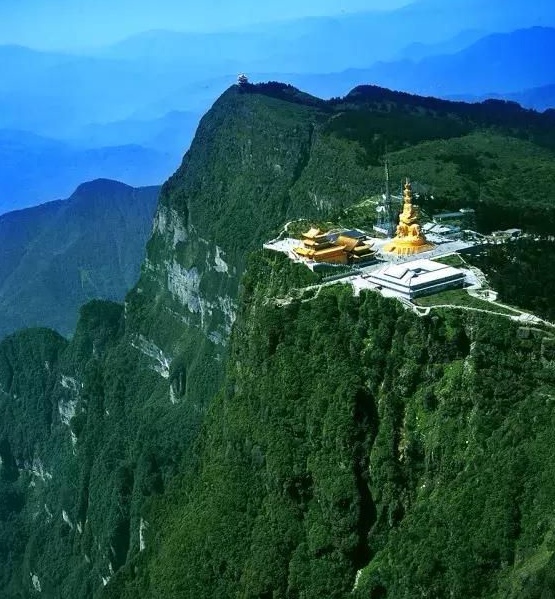
Seven character rehearsal • Zhong Ling Yuxiu Mount Emei
Pu Wenqiang
August 8, 2021
First
The Holy Buddha of Emei will be cultivated forever, and the four elephants will be blessed for thousands of years.
The Golden Buddha of sages provides Golden Summit, and the Buddha's light shines all over the mountains.
Yu Dai's remote makeup [2] is the best in the world, and the clouds and emeralds win Kyushu.
The foundation laying ceremony in the third year of Long'an [3], huite went to Sichuan [4] Lushan to pay.
In the 39th year [5], Puxian temple and Puxian Taoist center [6] celebrated the first place.
Emei stands at the edge of the water, and the south section of Qionglai flows.
The four mountains [7] are connected and towering, and Zhong Lingyu is beautiful.
There are 2300 kinds of animals and more than 3000 kinds of plants.
Scenic area 5A has beautiful scenery and rare world heritage.
The higher the main peak is, the steeper the back mountain is.
Looking at the square platform above the clouds, the heavenly soldiers and generals roared.
Watching the sunrise in the sea of clouds in Ganli is a ten thousand year show of paradise on earth.
The people of Qin Dynasty praised [8] Mount Emei as a thunderclap over princes.
Shengji evening clock [9] Laobao building, a bamboo pendant button [10].
The sound of the twenty-five thousand catties of the red bell shocked the Jade Emperor.
Literati boast of the holy temple and stay in Huazhang mountain, a national treasure.
Li Bai, Du Fu, Li Shimin, with his brush and ink [11] eternal excellence.
Second
Buddha shows his holiness [12] colorful clouds shine, and ten thousand halos reflect the sky.
Colorful Buddha light sprinkles all over the ground, and the whole world blesses believers.
The wonders of the ages are rare in the world, and the Buddha bless the eternal exploration.
Looking back on the imperial edict of Xizong [13], he built Yongming Huazang temple.
Zhongfeng center and Huayan, Wannian Heishui Lingyan.
It was renamed [14] because of the fire. It was called Yunji, and lying clouds returned to yunbaishuixi.
Cast the bronze statue of Puxian, build Lingyan and rebuild the foundation.
It is dedicated to the main hall of Baishui temple, with 62 tons, which is rare in the world.
The medicine farmer Pugong [15] built Puguang in the first century A.D.
Emperor Taizu of the Northern Song Dynasty appointed Jiye [16] to visit India.
There are 30 Emei temples, built with brick halls without beams [17] for ten thousand years.
Five thousand bottles of Huayan bronze statue [18], translated by King Bei of Siam.
The collection of seven thousand treasures [19], the world famous mountain [20], Guo Gong's pen.
Serving the country and feeling well are imperial topics, and the inscribed tablet and ink [21] came out of Kangxi.
Situ Xuan, the great ape ancestor [22], was in the spring and Autumn period and the Warring States period.
Emei martial arts tong arm fist [23] is famous all over the world.
Zen master Changfu wrote the tea ceremony [24], and tea zen always wins respect.
Snow buds, white buds, green bamboo leaves, holy mountain delicacies, holy water.
notes:
[1] Mount Emei Jinding Golden Buddha is a bronze casting and gold plating Buddha statue with a height of 48 meters and a total weight of 660 tons. It is composed of a pedestal and a statue of ten sages. The golden statue is 48 meters high, symbolizing the 48 great wishes of Amitabha Buddha. Among them, the pedestal is 6 meters high, 27 meters long and 27 meters wide, and is engraved with ten kinds of broad wishes of sages and Bodhisattvas on all sides. The exterior is decorated with granite relief. The statue of Puxian in ten directions is 42 meters high and weighs 350 tons. The whole gold statue has perfect design and exquisite workmanship. It can be called an unparalleled work of copper casting giant sculpture, and has high cultural value and ornamental aesthetic value.
[2] The annals of Emei county says: "the clouds are bright and green, and the makeup is as beautiful as a moth's eyebrow. It's thin and long, so it's called Emei Mountain.
[3] Jin Long'an three years (Park 399).
[4] Monk Huichi came to Shu from Lushan and built a Puxian temple here to worship the Puxian Bodhisattva.
[5] Pushen temple was built in 399.
[6] It is said that Mount Emei has become a Bodhisattva ashram.
[7] Emei Mountain is composed of da'e mountain, er'e mountain, san'e mountain and si'e mountain. The main peak of da'e mountain is 3099 meters high.
[8] The people of Qin said: Emei is beautiful all over the world.
[9] "Shengji evening bell", one of the ten scenic spots of Mount Emei, tells the story of a bell in Shengji temple at the foot of Mount Emei. There is a bell tower in Shengji temple. The clock tower is about three feet high and two feet wide. It is built with warped eaves and flying pavilions, and embroidered lattice is trivial. On the gate workshop, colorful cloud patterns are carved. There is a large black lacquer plaque on the gate of the pavilion, which is written with four gold characters "the true territory of e peak". A big clock hung on the beam of the clock tower. The clock is made of pig iron. It is as tall as a person. It is said to weigh 25000 kilograms. In the dead of night, monks ring bells, beat drums and chant scriptures. That thick and loud bell, in the silent night, spread farther and farther, and can be heard far away.
[10] It is a fairy tale of using a bamboo strip to hang a 25000 kg clock through the clock button.
[11] Famous poets Li Bai and Du Fu of the Tang Dynasty and Emperor Li Shiming of the Tang Dynasty all wrote poems praising Mount Emei.
[12] Buddha's holiness is a strange natural landscape in Mount Emei.
[13] During the reign of emperor Xizong of the Tang Dynasty, Yongming Huazang temple was built, and the six temples of Zhongfeng, central, Huayan, Wannian, Heishui and Lingyan were rebuilt.
[14] Later, because there were many fires in the mountains, the temple was renamed Jiyun, woyun, Guiyun, Heishui and Baishui, which were restrained by three clouds and two waters. Later, Heishui temple was called Emei ancestral hall.
[15] In the middle of the 1st century, Buddhism was introduced into Mount Emei via India via the Southern Silk Road, and Pugong, a medicine farmer, established Puguang hall in Jinxiang today.
[16] In the middle of the 9th century, Zhao Kuangyin, the emperor Taizu of the Song Dynasty, sent a group of monks headed by monk Jiye to visit India.
[17] The brick hall without beams, located in Wannian temple on Mount Emei, Sichuan, is the second Hall of Wannian temple, also known as Puxian hall. The hall, built in the Ming Dynasty, is built entirely of bricks, without any wood, column or tile.
[18] Huayan now offers nearly 5000 bottles of bronze statues cast in previous dynasties.
[19] There are more than 7000 cultural and Buddhist objects in Mount Emei.
[20] The world famous plaque of Mount Emei was inscribed by Mr. Guo Moruo.
[21] the plaques of Baoguo temple and shanjue temple were written by Emperor Kangxi of the Qing Dynasty.
[22] Emei Mountain sect was founded much earlier than the two sects. According to the existing historical data, it is believed that the breeding time of Emei Wushu can be traced back to the ancient times. It was formed in the Warring States period in the spring and Autumn period, based on the "Emei arm fist" of the ancestor of White Ape (situ Xuankong). On the regional definition of Emei Wushu, there is still controversy in the historical circles: in a broad sense, Emei Wushu was formed in Emei.
[23] it is said that the samurai situ Xuankong, who called Lingzi, cultivated and ate in the mountains. While getting along with Emei monkeys day and night, he imitated the movements of apes and created a set of "Emei arm fist" with flexible attack and defense. There are many apprentices. Because situ Xuankong often wore white clothes, the disciples respected him as the "white ape ancestor".
[24] the Emei sect in tea ceremony began in 845 ad. it was founded by Zen master Changfu of Emei Mountain (now a native of Emei Mountain) and created the book "clear rules of Emei tea ceremony patriarchy". In 880 ad, 62 monks were given tea methods, and in 881 ad, master Longyuan of Wannian Temple presided over the rules of tea ceremony. The spirit of Emei tea ceremony is "wisdom and beauty", which is not based on traditional understanding.
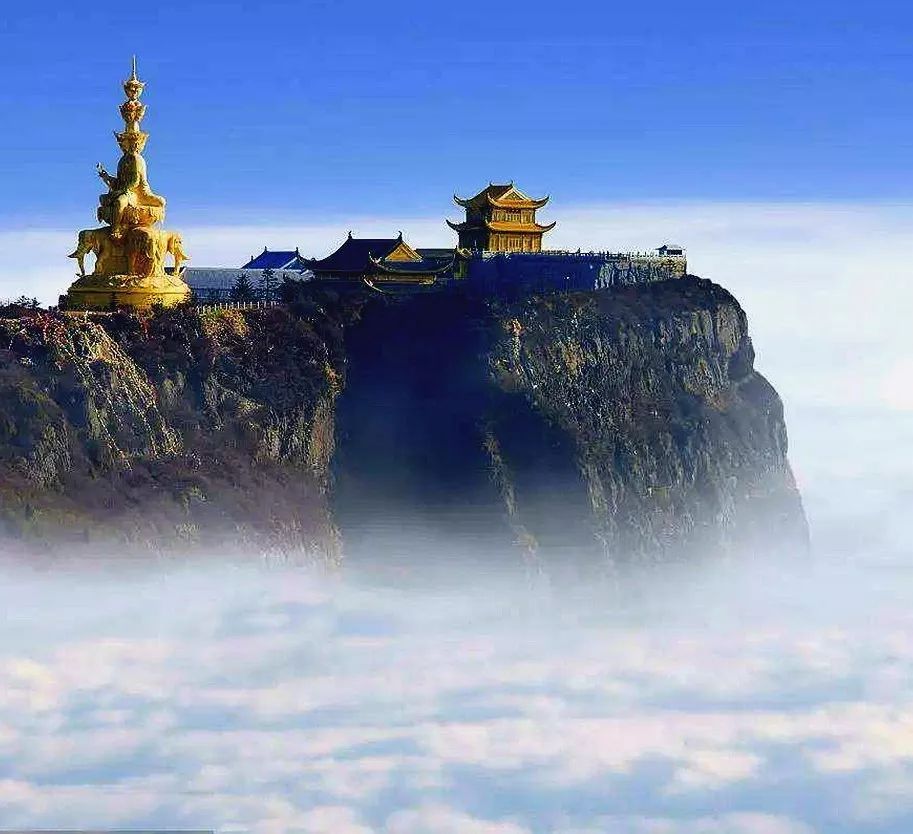

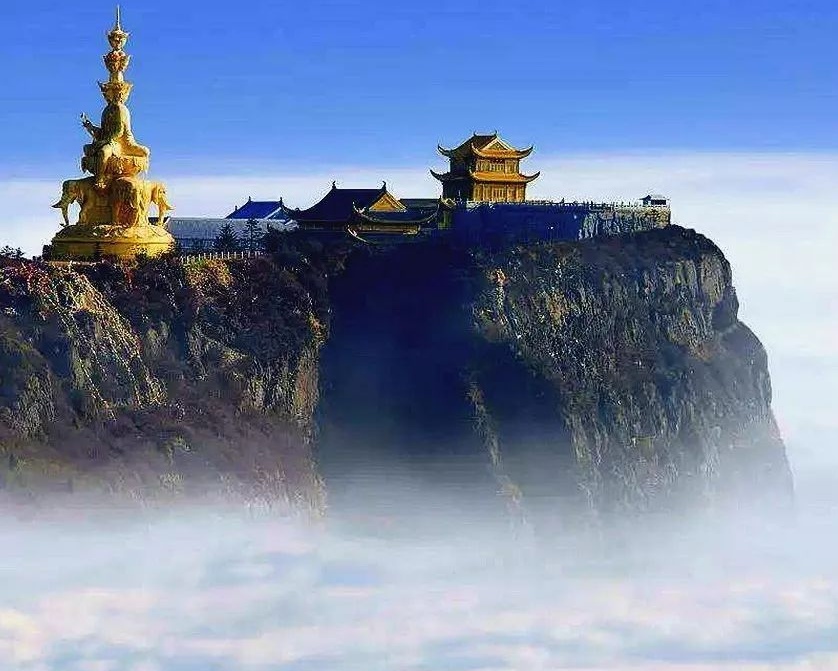

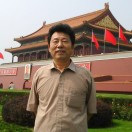
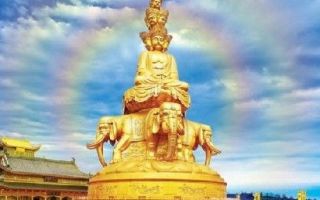
蒲文强
蒲文强